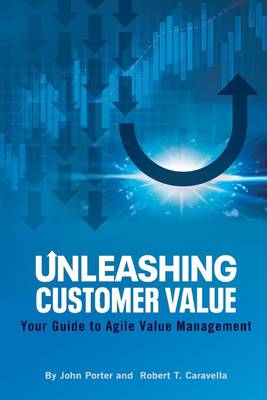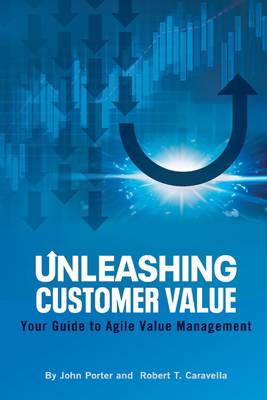
- Retrait gratuit dans votre magasin Club
- 7.000.000 titres dans notre catalogue
- Payer en toute sécurité
- Toujours un magasin près de chez vous
- Retrait gratuit dans votre magasin Club
- 7.000.000 titres dans notre catalogue
- Payer en toute sécurité
- Toujours un magasin près de chez vous
Unleashing Customer Value
Your Guide to Agile Value Management
John Porter, Robert Caravella
Livre broché | Anglais
25,45 €
+ 50 points
Description
Massive changes on a global scale, driven by the subscription economy and cloud-enabled technology, are making (and breaking) traditional business models at an alarming rate. However, change also generates excellent opportunities for agile organizations properly positioned to adapt. To address these disruptive changes, a wide variety of B2B solutions are being introduced at an astonishing pace across all industry segments -- leading to significant challenges for both buyers and sellers of these solutions. These challenges include technological issues such as implementation, customization and integration, as well as business-related challenges such as adoption, user-training or even simply being able to answer the basic question from Chief Financial Officers such as: "Why should I invest our funds in this solution" or sometimes simply, "Tell me what will be the value to our company of doing this". A typical enterprise has a long list of potential projects to fund. So it needs a credible way to 'rack and stack' investment priorities. It's not just a question of convincing decision makers that your problem is worth solving, you must 'hurdle' other projects in the queue and move up the funding priority list. Industry analyst research reports that 90% of buyers require quantifiable evidence of business benefits before investing. Yet, according to IDC, two-thirds of buyers confess that they are poorly equipped with knowledge and tools to create a credible business case, while over four-fifths of buyers look to their suppliers for assistance in quantifying value. And studies show that as many as 60% of buying opportunities end with a 'No Decision' outcome due to a lack of compelling content to overcome the inertia of maintaining the status quo. Buyers are challenged with the 'what-to-invest-in' decision and expect sellers to help (a) quantify the value of their solutions in a transparent way and (b) measure value realized post solution implementation. Sellers seek a credible way to respond, while differentiating their solutions from competitive alternatives. To bridge this buyer-seller 'expectations gap, ' author John Porter makes the point that all buyer-seller interactions need to be based on business value. There has been an overall evolution in the concept of business value over the last years. Originally, when it was relatively straightforward to map a product capability to a specific problem, this evolution began with technical Product / Feature Selling and little or no business value discussion. As problems became more complex, buyers and sellers relied on Solution Selling to scope requirements and design more sophisticated solutions. As competition stiffened, a Generic Value Selling model appeared -- where sellers provided buyers with generic examples of the value achieved by other organizations. But these generalized value propositions were not specifically relevant to each organization; they did not always account for industry, geography, size, or use case variations. This led to Specific Value Selling methodologies that enabled value to be quantified and customized for each opportunity. Agile Customer Value Management completes this evolution. Specifically, CVM brings organizations to the level of Differentiated Value Selling -- where value is quantified for a specific project including differentiation from other alternative uses of budget such as direct competition or alternative uses of capital. Author John Porter focuses on WHAT this role is, WHY it is important, and HOW it bridges the "expectations gap". He provides insights and best practices that will help establish the required agile Customer Value Management (CVM) environment and unleash the power of the Value Practitioner as a key player. Building an effective CVM Program requires driving change across three dimensions -- people, process, and technology. While the right process, practices, and tools represent the 'infrastructure' underpinning of CVM, i
Spécifications
Parties prenantes
- Auteur(s) :
- Editeur:
Contenu
- Nombre de pages :
- 178
- Langue:
- Anglais
Caractéristiques
- EAN:
- 9781098339081
- Date de parution :
- 11-02-21
- Format:
- Livre broché
- Format numérique:
- Trade paperback (VS)
- Dimensions :
- 150 mm x 224 mm
- Poids :
- 498 g







